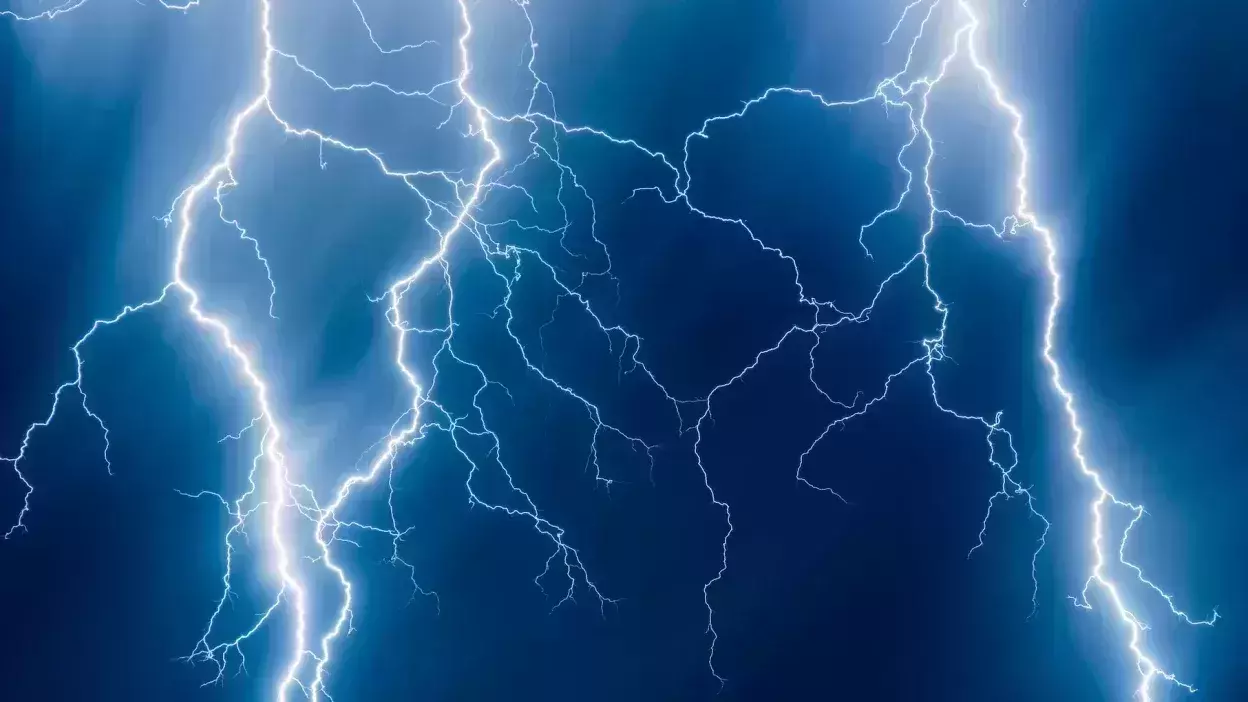
New phosphorus material discovered as a result of lightning strike
text_fieldsA university scientist has revealed that a lightning strike to a tree in a neighbourhood of New Port Richey in Florida, US, caused the production of a new phosphorus substance.
According to geoscientist Matthew Pasek of the University of Florida, the substance, which was discovered in a rock and in solid form for the first time on Earth, may belong to a new mineral group.
Pasek examined in a study how high-energy events, such as lightning, can cause unique chemical reactions and, in this instance, result in a new material which is transitional between space minerals and those found on Earth. The study is published in the journal Communications Earth & Environment.
"We have never seen this material occur naturally on Earth - minerals similar to it can be found in meteorites and space, but we've never seen this exact material anywhere," said geoscientist Matthew Pasek.
"When lightning strikes a tree, the ground typically explodes out and the surrounding grass dies, forming a scar and sending electric discharge through nearby rock, soil and sand, forming fulgurites, also known as 'fossilized lightning'," said Pasek.
Pasek purchased the fulgurite from the New Port Richey homeowners, who discovered the ‘lightning scar’ and found a fulgurite and decided to sell it. He then began a collaboration with Luca Bindi, a professor of mineralogy and crystallography at the University of Florence in Italy.
The team set out to better understand high-energy phenomena by investigating unusual minerals that bear the element phosphorus, especially those formed by lightning.
Pasek said that understanding lightning better would help know the damage a lightning strike could cause on average and how dangerous it is.
Stressing the importance of lightning safety, he said that if it was strong enough to melt rock, it could certainly melt people too.
Not only had the lightning strike combusted the iron on the tree roots, accumulation of which is common in wet environments such as in Florida, but it had also combusted the naturally occurring carbon in the tree as well. Pasek said that the two elements led to a chemical reaction that created a fulgurite that looked like a metal 'glob'.
Inside the fulgurite, a colourful, crystal-like matter revealed a material never before discovered.
Co-principal investigator Tian Feng, a graduate of the University of South Florida's geology program, attempted to remake the material in a lab.
The experiment, having been unsuccessful, indicated that the material likely formed quickly under precise conditions, and if heated too long, would turn into the mineral found in meteorites.
Feng said that while previous research indicated a lightning reduction of phosphate to have been a widespread phenomenon on the early Earth, there is an environmental phosphite reservoir issue in Earth that these solid phosphite materials are hard to restore.
Feng said this research may reveal other forms of reduced minerals are plausible and many could have been important in the development of life on Earth.
Given the rarity of the mineral occurring naturally, Pasek said that it's unlikely this material could be mined for uses similar to other phosphates, such as fertilizer.
However, Pasek and Bindi plan to further investigate the material to determine if it could be officially declared a mineral and bring additional awareness to the scientific community.
With PTI inputs























